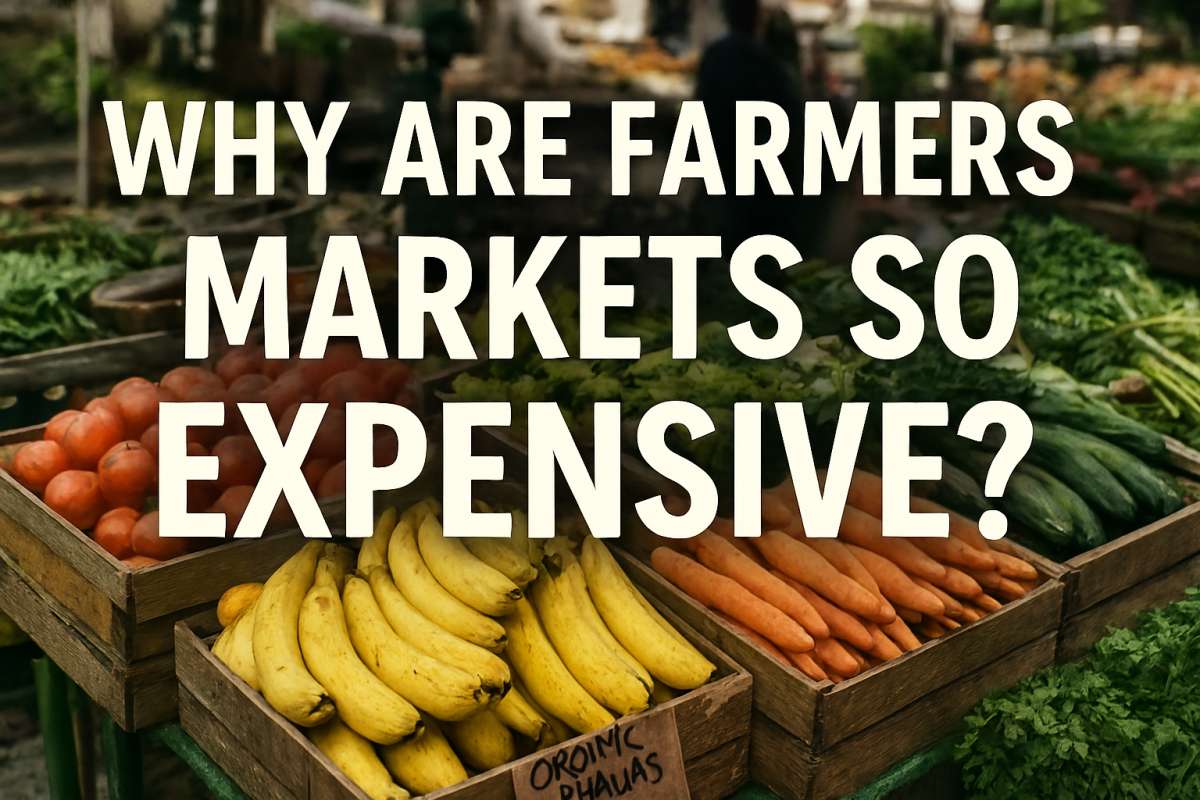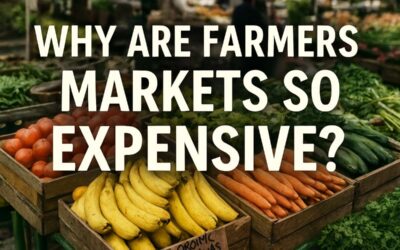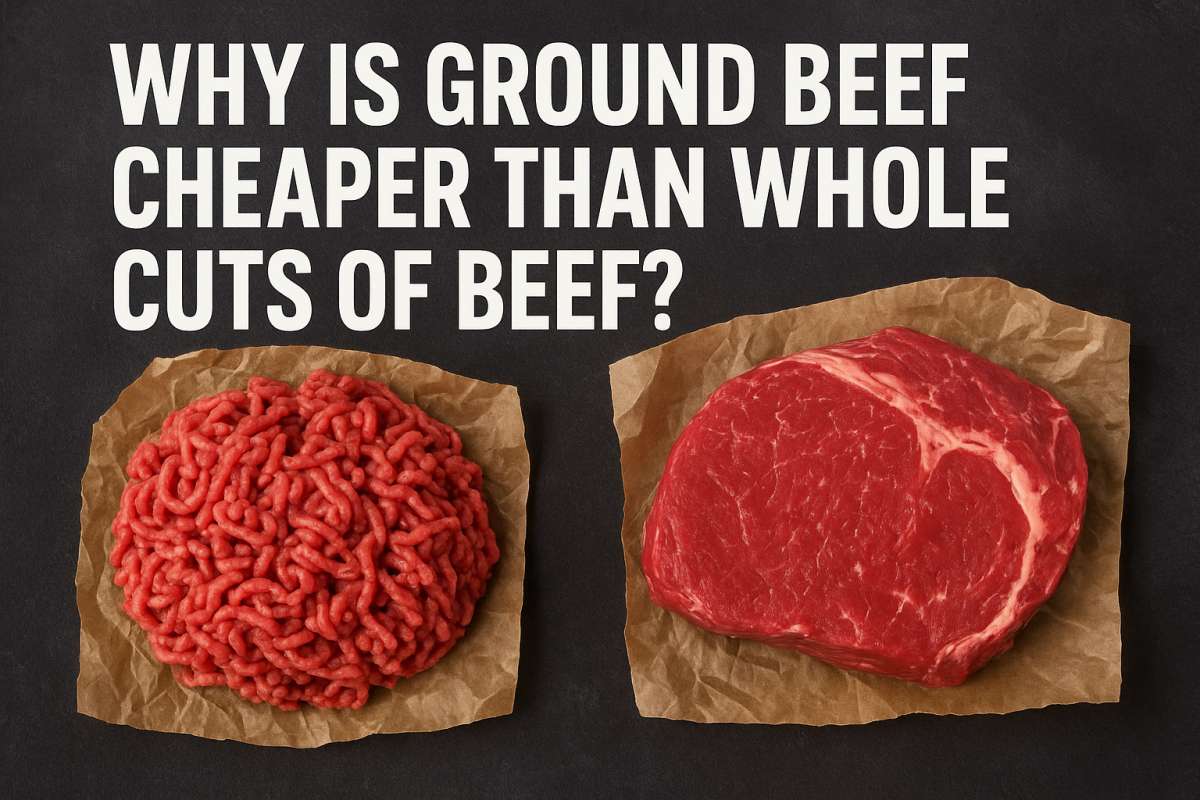Why Are Farmers Markets So Expensive? The Real Reasons Explained

Farmers markets are more expensive than supermarkets because the food is produced on a smaller scale, often organically, without mass-production or government subsidies. Vendors pay for market fees, transportation, and sustainable farming practices — all of which increase costs. You’re not just buying produce; you’re supporting ethical labor, eco-friendly methods, and local economies that prioritize quality over quantity.
The True Cost of Freshness
At a farmers market, you’re buying food that’s been picked within the last 24–48 hours. Unlike supermarket produce, which may have traveled thousands of miles and sat in storage for weeks, farmers market goods are fresher and more nutrient-rich.
This freshness comes at a price — smaller batches, quicker turnover, and less reliance on industrial logistics mean higher production costs per item.
Key insight: Freshness and flavor are part of what you’re paying for, not just the food itself.
Small-Scale Farming vs. Industrial Production
Supermarkets source their goods from large-scale industrial farms that produce massive quantities of food at low cost. These farms benefit from government subsidies, automated harvesting, and cheap labor.
In contrast, local farmers often grow smaller, diverse crops that require more hands-on care. They use fewer chemicals, pay fair wages, and invest more time per plant or animal.
Example:
A small organic farmer growing heirloom tomatoes might harvest 200 pounds in a season. A large industrial farm could produce 2,000 pounds for the same cost. The smaller farmer must charge more per pound to survive.
Sustainable Farming Practices Add Costs
Sustainable, regenerative, and organic farming practices are healthier for the planet — but they aren’t cheap. Farmers who avoid synthetic pesticides, chemical fertilizers, or GMOs invest in natural soil health, crop rotation, and pest management techniques that take more time and labor.
Moreover, organic certification itself can cost thousands of dollars annually. Even if a farmer isn’t certified organic, they often follow the same standards — without the cost-cutting shortcuts of industrial agriculture.
In short: You’re paying for clean, chemical-free food grown responsibly, not mass-produced for the lowest dollar.
Limited Supply and Seasonal Availability
Farmers markets operate within natural growing cycles. This means prices can fluctuate depending on the season, crop yield, and weather conditions. A drought, pest outbreak, or shorter growing period can all raise prices.
Unlike large distributors who can import from other countries year-round, small farmers depend on local conditions.
Example:
Strawberries in summer might be cheap and abundant, but in early spring or late fall, the price can double – because supply is lower and the effort to grow them out of season increases.
Market Fees, Transportation, and Labor
Farmers market vendors have unique overhead costs that most consumers never see. They must pay:
- Booth fees or market permits to participate.
- Fuel and transportation costs to bring produce from the farm to the city.
- Labor costs for setup, sales, and breakdown every market day.
Unlike a grocery store chain that ships in bulk once a week, farmers personally transport and sell their goods. These extra steps add to the final price tag.
No Middlemen Means Fair Wages
At first glance, “no middleman” should make things cheaper — but in this case, it ensures fair payment to the farmer.
In supermarkets, distributors and retailers take significant cuts from sales, forcing farmers to sell their produce for pennies per pound.
At a farmers market, you’re paying the producer directly. That means more of your money goes into the farmer’s hands, helping them earn a sustainable living wage.
So, while you may pay $5 for a dozen eggs instead of $3, you’re directly funding ethical labor and fair compensation — not corporate profits.
Local, Artisanal, and Heirloom Quality
Many farmers market products — from vegetables to honey to baked goods — are artisanal or heirloom varieties, not generic mass-produced ones.
These specialty products often have superior taste, nutrition, or uniqueness, which naturally makes them pricier. You’re also paying for craftsmanship — for instance, handmade soap or small-batch cheese made with care and precision.
Think of it this way: A handcrafted product always costs more than one made on a conveyor belt.
The Hidden Value: Community and Transparency
When you buy at a farmers market, you’re buying trust. You can talk directly to the person who grew your food, ask questions about pesticides, fertilizers, and harvesting methods, and even visit their farm.
This transparency builds community connections — something you can’t get from a barcode in a supermarket.
The value isn’t just in the food itself, but in the relationship and accountability between producer and consumer.
Environmental and Ethical Benefits
Cheaper supermarket produce often hides its true cost — paid through environmental damage, exploitative labor, and heavy carbon emissions.
Farmers markets, on the other hand, support local supply chains, reduce transportation pollution, and encourage biodiversity.
You’re not just paying for groceries; you’re investing in a food system that’s better for the planet and the people growing your food.
Is It Worth Paying More?
If your goal is to save money, supermarkets will always win. But if you value freshness, sustainability, ethics, and flavor, farmers markets are worth every rupee or dollar.
Many shoppers find that buying seasonal items, building relationships with vendors, and planning meals around what’s available locally can actually balance costs over time.
Pro Tip: Shop at the end of the market day — farmers sometimes lower prices to clear out remaining stock.
Final Thoughts
Farmers markets aren’t expensive because vendors want to overcharge — they’re expensive because they reflect the real cost of growing food responsibly. When you pay more at a farmers market, you’re funding clean soil, ethical labor, animal welfare, and community sustainability.
In a world dominated by convenience and low prices, farmers markets remind us what food is truly worth – and how much we’ve forgotten the value of real, honest farming.








